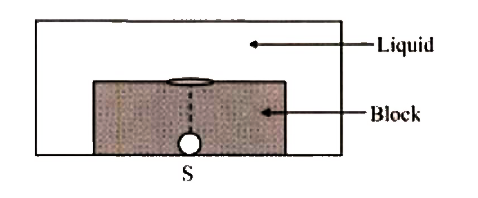A : Proper cutting of diamond makes it sparkle.
R : Diamond has very large refractive index.
If both Assertion & Reason are true and the reason is the correct explanation of the assertion, then mark (1).
If both Assertion & Reason are true but the reason is not the correct explanation of the assertion, then mark (2).
If Assertion is true statement but Reason is false, then mark (3).
If both Assertion and Reason are false statements, then mark (4).
The correct Answer is:A
To solve the question, we need to analyze both the assertion (A) and the reason (R) provided:
Assertion (A): Proper cutting of diamond makes it sparkle.
Reason (R): Diamond has a very large refractive index.
Step 1: Understand the Assertion
The assertion states that the proper cutting of a diamond enhances its sparkle. This is true because the way a diamond is cut affects how light enters and exits the stone, leading to the phenomenon of sparkle or brilliance.
Hint: Consider how light behaves when it enters and exits a diamond.
Step 2: Understand the Reason
The reason provided states that diamonds have a very large refractive index. The refractive index (μ) of a material indicates how much light slows down when it enters that material. Diamonds have a high refractive index (approximately 2.42), which means that light travels significantly slower in diamond than in air.
Hint: Recall the definition of refractive index and its significance in optics.
Step 3: Relate the Assertion and Reason
The high refractive index of diamonds is crucial for the phenomenon of total internal reflection (TIR). For TIR to occur, the angle of incidence must be greater than the critical angle (θC). The critical angle is determined by the refractive index, where:
sin(θC)=1μ
Since diamonds have a high refractive index, their critical angle is low. This means that light entering the diamond at a relatively small angle will undergo total internal reflection, which contributes to the sparkle.
Hint: Think about how total internal reflection contributes to the visual effects of gemstones.
Step 4: Conclusion
Both the assertion and the reason are correct. The assertion is true because the proper cutting of the diamond allows for maximum light reflection and refraction, enhancing its sparkle. The reason is also correct as the high refractive index of diamond facilitates total internal reflection, which is essential for the sparkle effect.
Thus, the final answer is that both the assertion and the reason are correct, and the reason correctly explains the assertion.
Final Answer: Both A and R are correct, and R is the correct explanation for A.
Reason (R): Diamond has a very large refractive index.
The assertion states that the proper cutting of a diamond enhances its sparkle. This is true because the way a diamond is cut affects how light enters and exits the stone, leading to the phenomenon of sparkle or brilliance.
The reason provided states that diamonds have a very large refractive index. The refractive index (μ) of a material indicates how much light slows down when it enters that material. Diamonds have a high refractive index (approximately 2.42), which means that light travels significantly slower in diamond than in air.
The high refractive index of diamonds is crucial for the phenomenon of total internal reflection (TIR). For TIR to occur, the angle of incidence must be greater than the critical angle (θC). The critical angle is determined by the refractive index, where:
Both the assertion and the reason are correct. The assertion is true because the proper cutting of the diamond allows for maximum light reflection and refraction, enhancing its sparkle. The reason is also correct as the high refractive index of diamond facilitates total internal reflection, which is essential for the sparkle effect.
Topper's Solved these Questions
- RAY OPTICS AND OPTICAL INSTRUMENTSBOOK - AAKASH INSTITUTE ENGLISHCHAPTER - RAY OPTICS AND OPTICAL INSTRUMENTSEXERCISE - ASSIGNMENT (SECTION - C)
80 Videos
- PHYSICAL WORLDBOOK - AAKASH INSTITUTE ENGLISHCHAPTER - PHYSICAL WORLDEXERCISE - ASSIGNMENT (Section-B)
4 Videos
- SEMICONDUCTOR ELECTRONICS (MATERIAL, DEVICES AND SIMPLE CIRUITS )BOOK - AAKASH INSTITUTE ENGLISHCHAPTER - SEMICONDUCTOR ELECTRONICS (MATERIAL, DEVICES AND SIMPLE CIRUITS )EXERCISE - Assignment SECTION - D (Assertion & reason type Question)
10 Videos
Similar Questions
Diamond is very hard, because
View SolutionAssertion (A) : Diamond does not reflect light .
Reason (R) : Diamond has low refractive index.
View SolutionWhy do diamonds sparkle?
View SolutionRefractive index of diamond with respect to glass is 1.6 and absolute refractive index of glass is 1.5. Find out the absolute refractive index of diamond.
View SolutionThe refractive index of air with respect to glass is 2/3. The refractive index of diamond with respect to air is 12/5. Then the refractive index of glass with respect to diamond will be
View SolutionThe value of refractive index of diamond
View SolutionThe critical angle for diamond (refractive index = 2) is
View SolutionAssertion (A) : Graphite is chemically more reactive than diamond .
Reason (R) : Diamond is very hard but fraphite si soof .
View SolutionAbsolute refractive index of a medium is X. Refractive index of same medium w.r.t to air is Y and absolute refractive index to air is Z. Then the relation between them is
View SolutionA point source S is placed at the bottom of a 12 mm high transparent block of diamond ( refractive index = 2.4 ) . The block is immersed in an optically rarer liquid as shown in the figure. It is found that the light emerging from the block to the liquid forms a circular bright spot of diameter 18 mm on the top of the block. What is the refractive index of the liquid ?

View Solution
